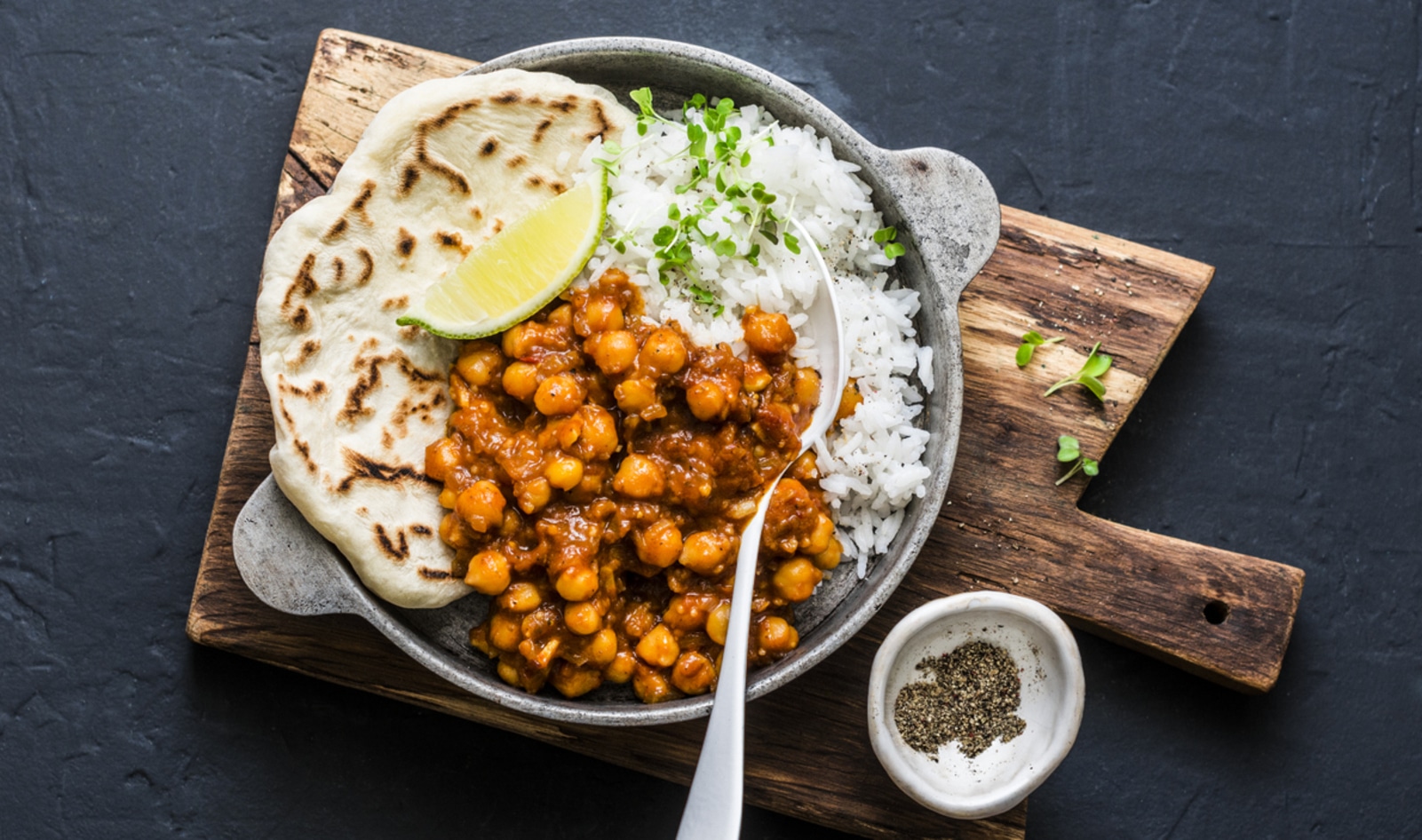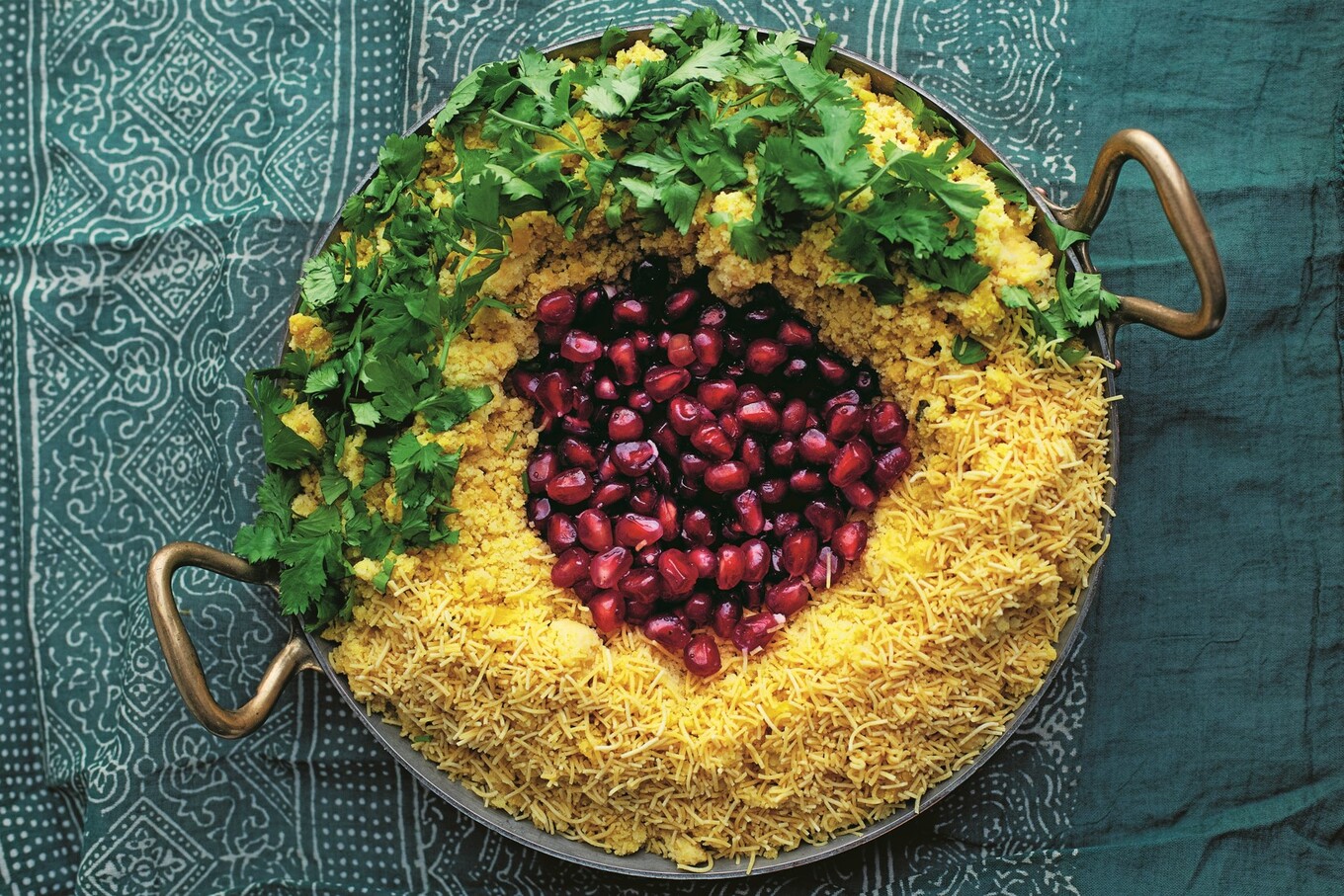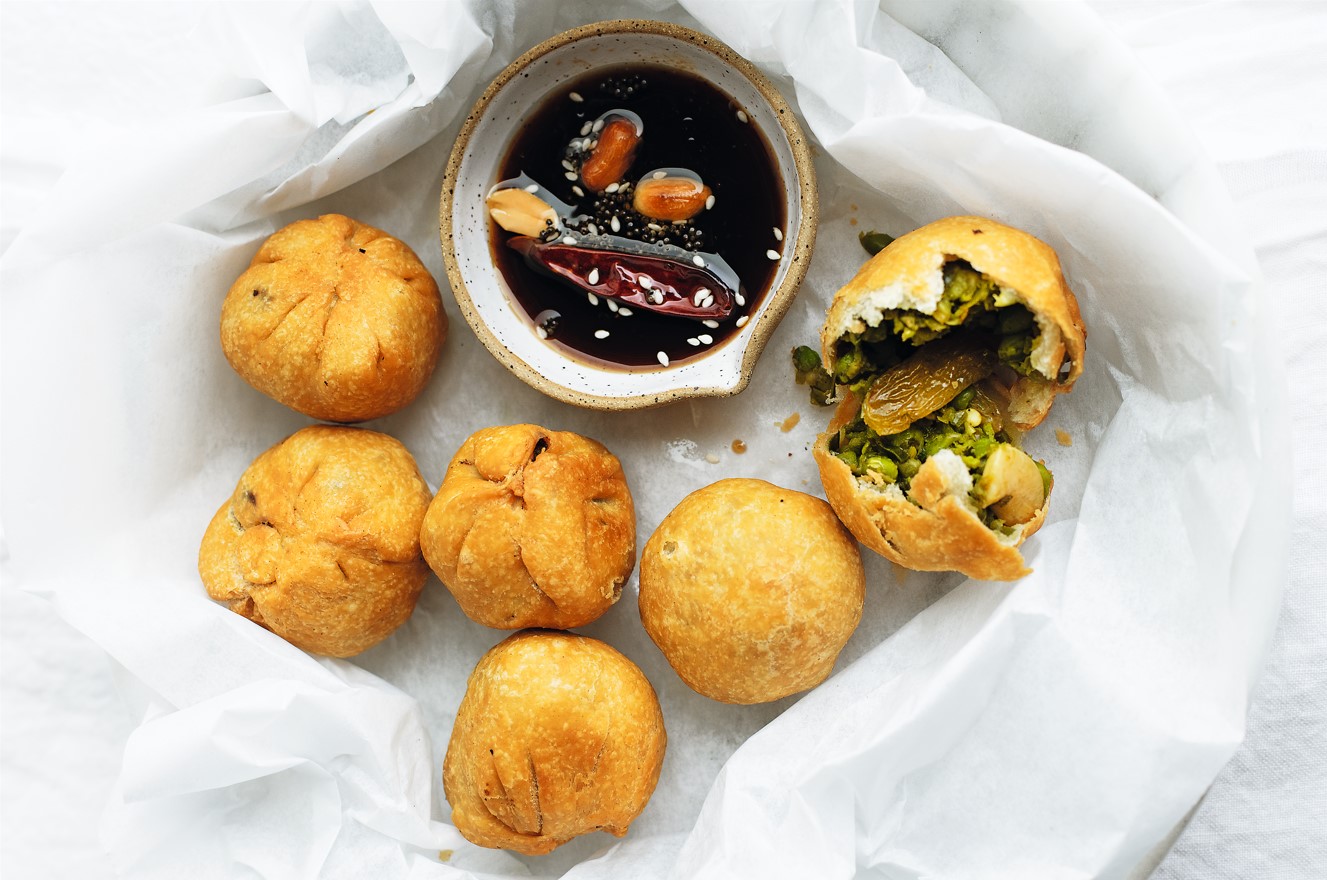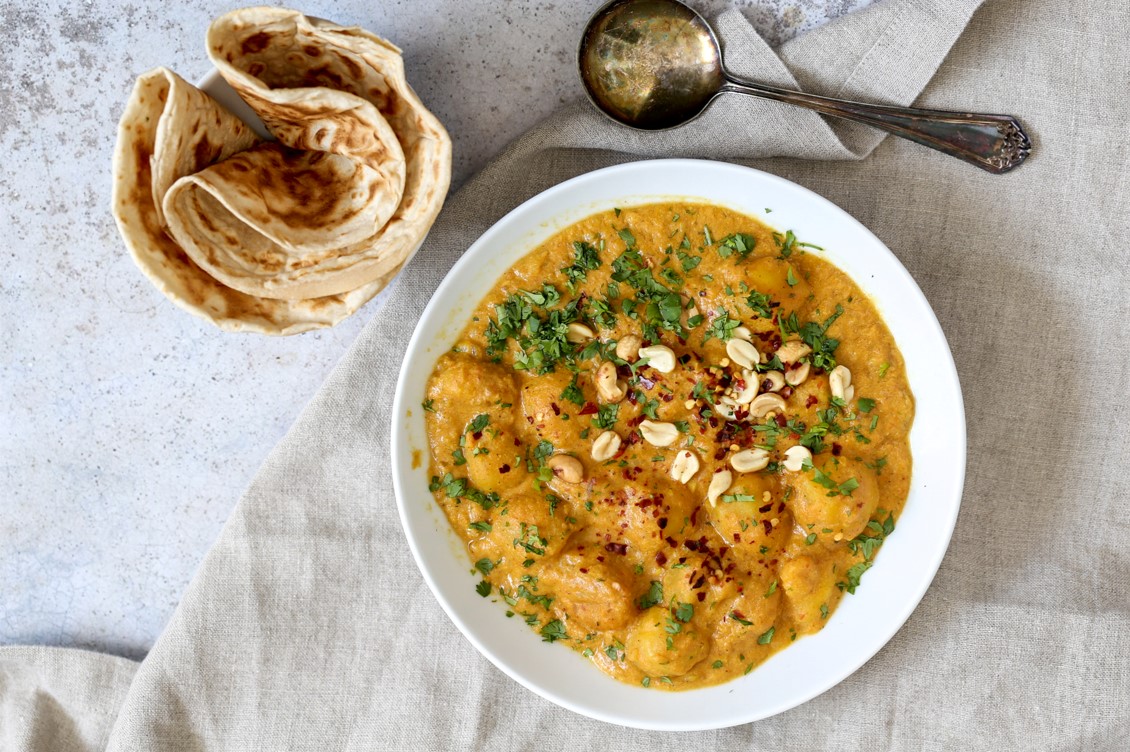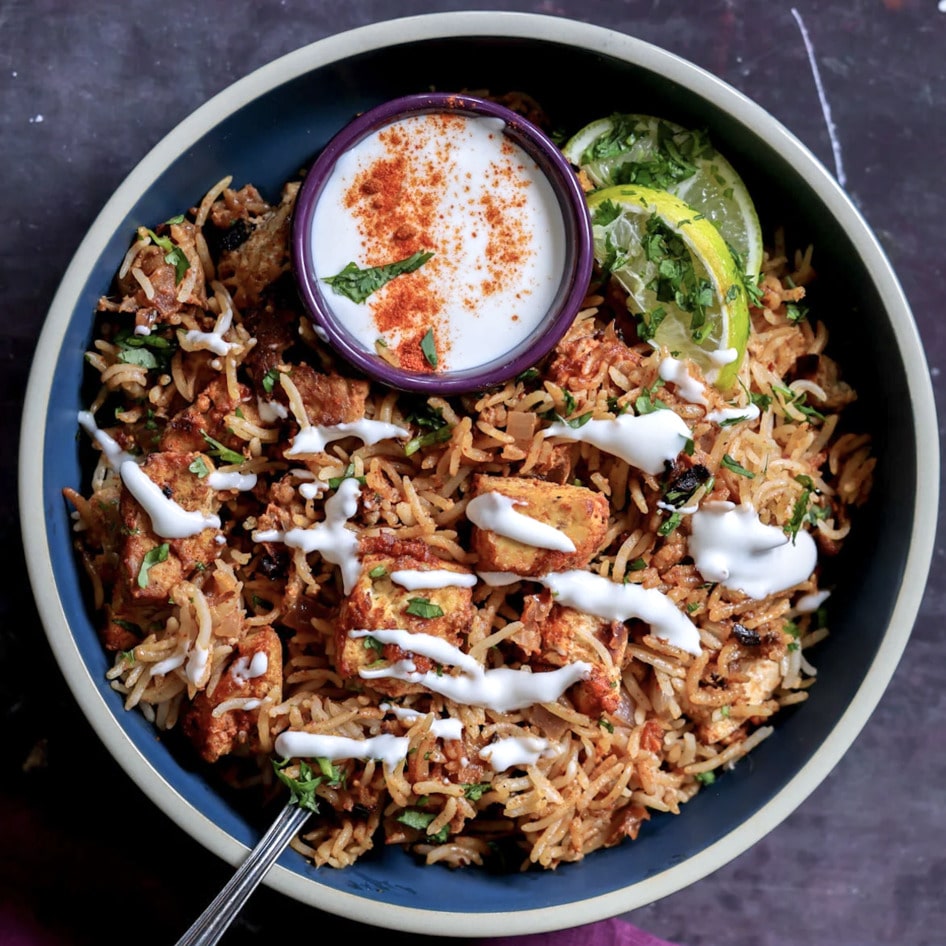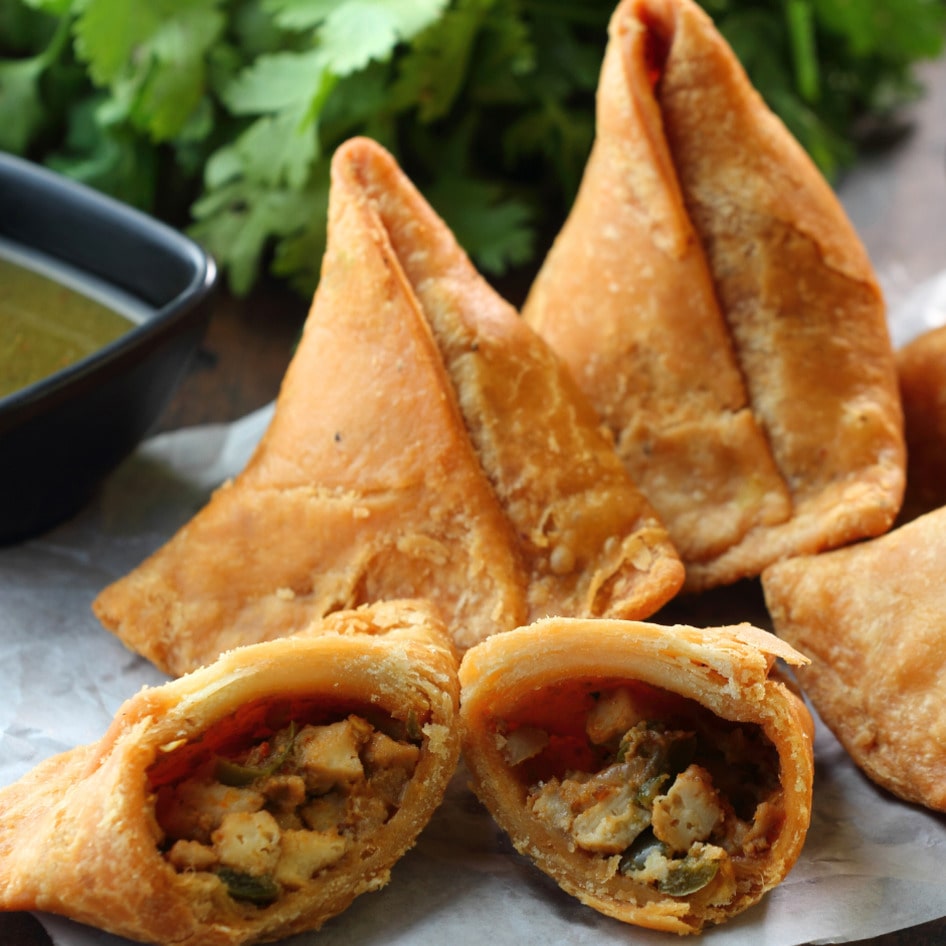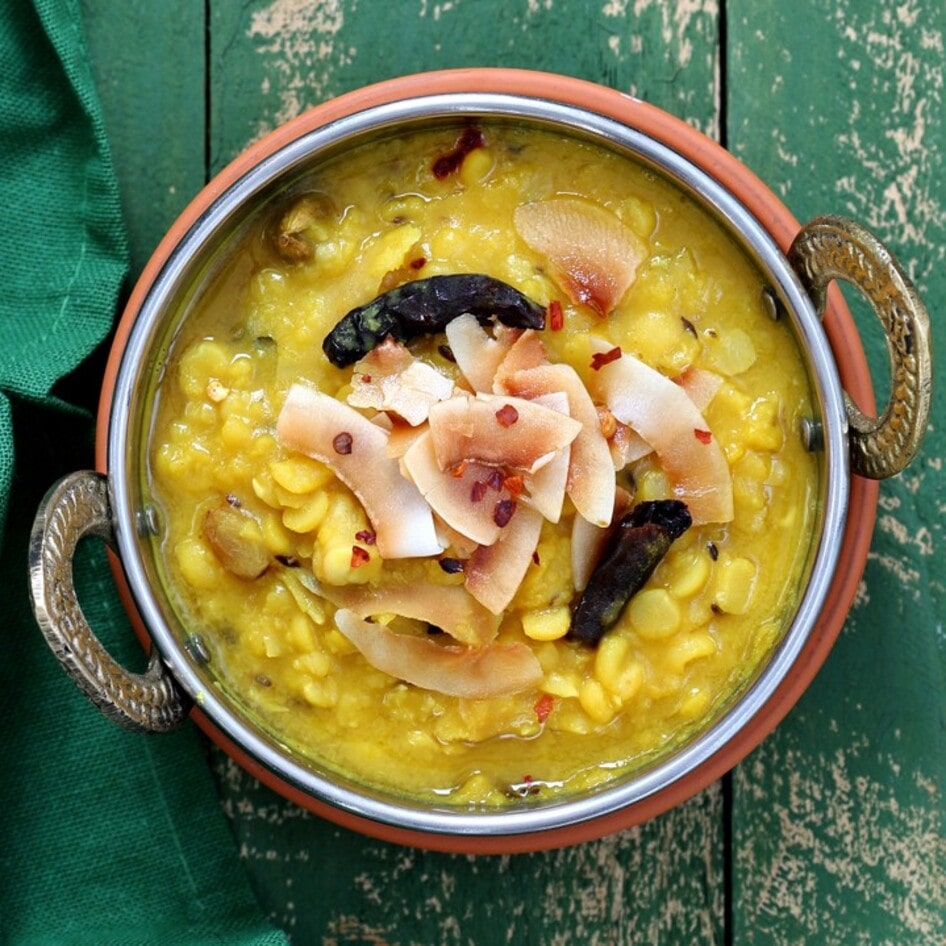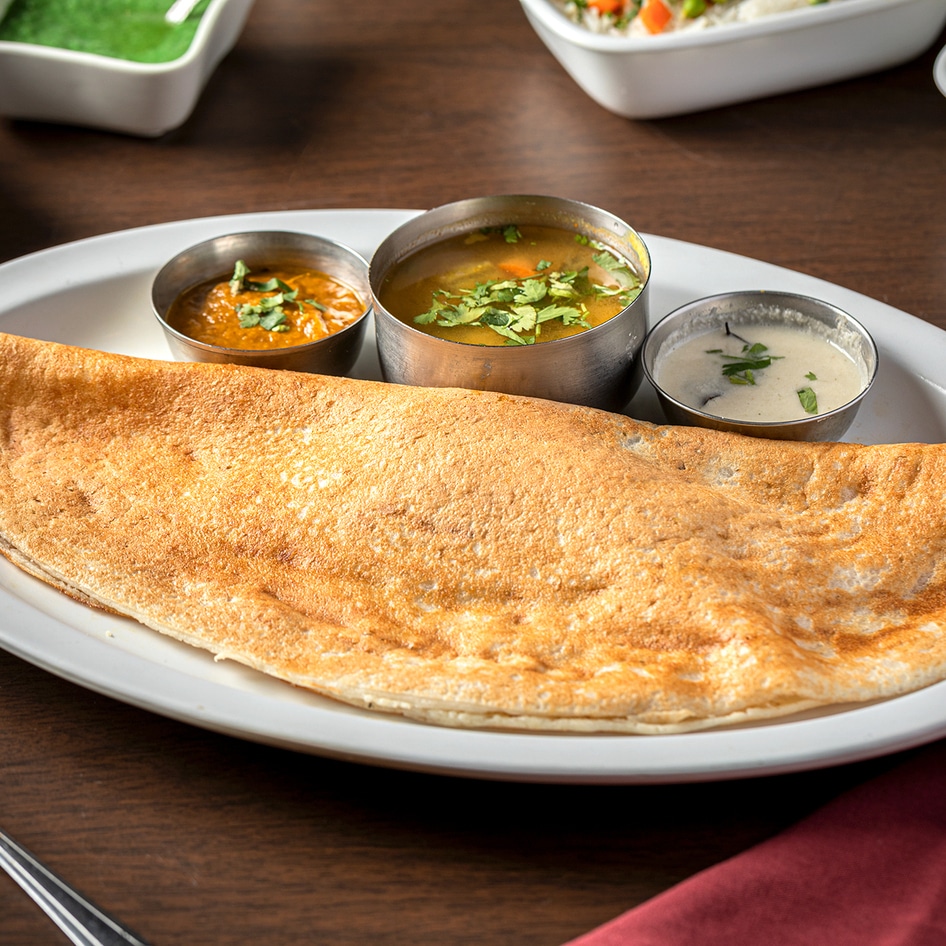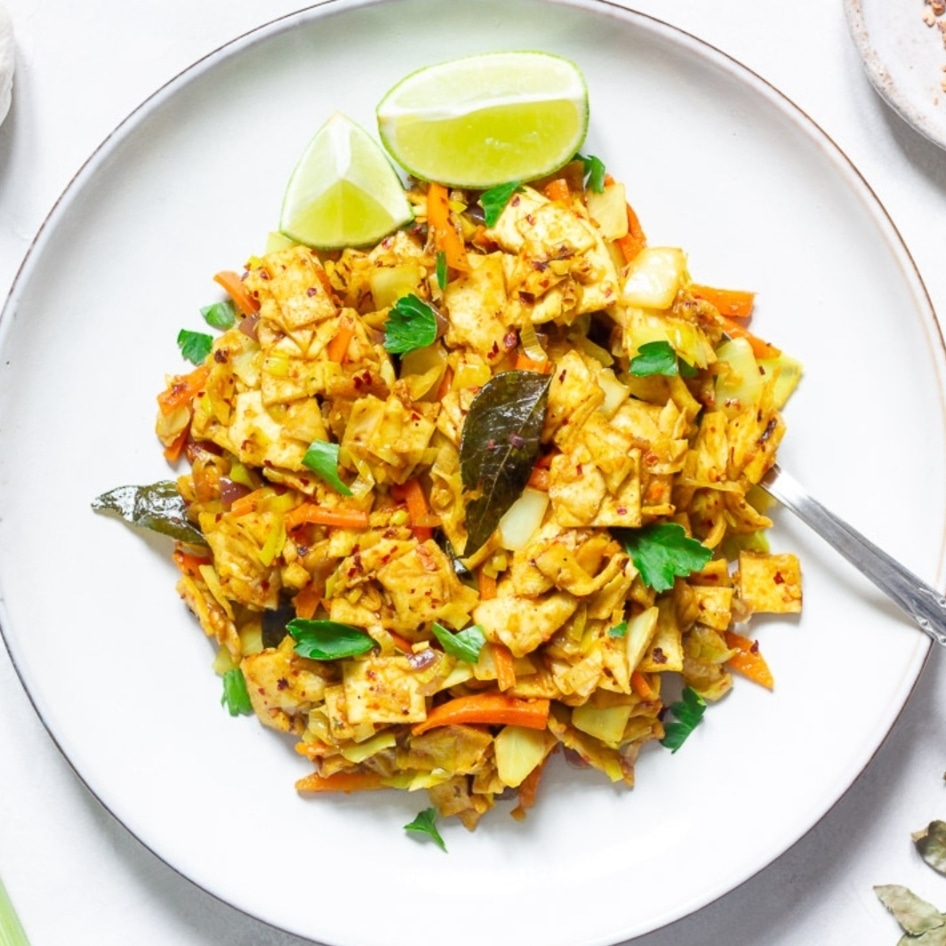India has an extraordinarily rich culinary heritage with recipes that go back hundreds of years. With its 28 states and eight union territories, each region brings something to the table. However, as diverse as Indian food may be, there are many dishes that are commonly made throughout the country, all crafted with a family’s unique spin to make something familiar taste truly original and inviting. We’re not going to attempt a deep dive into Indian food (because that would require an encyclopedia or two), but we will break down the essentials.
Follow this guide when you’re eating Indian food anywhere—even in India—so you know exactly what to ask for to ensure your meal is vegan. For the sake of convenience, we’re classifying the food from India into the four different regions they originate from: North, South, West, and East. Remember that within these regions there may be variations, but with this guide you will be able to maneuver your way through the labyrinth of popular Indian cuisine.
India: a vegetarian paradise
India is a great place for vegetarians, as it’s highly populated with individuals who abstain from meat. According to the Pew Research Center, 39 percent of Indian adults identify as vegetarians. Additionally, 81 percent limit their meat intake.
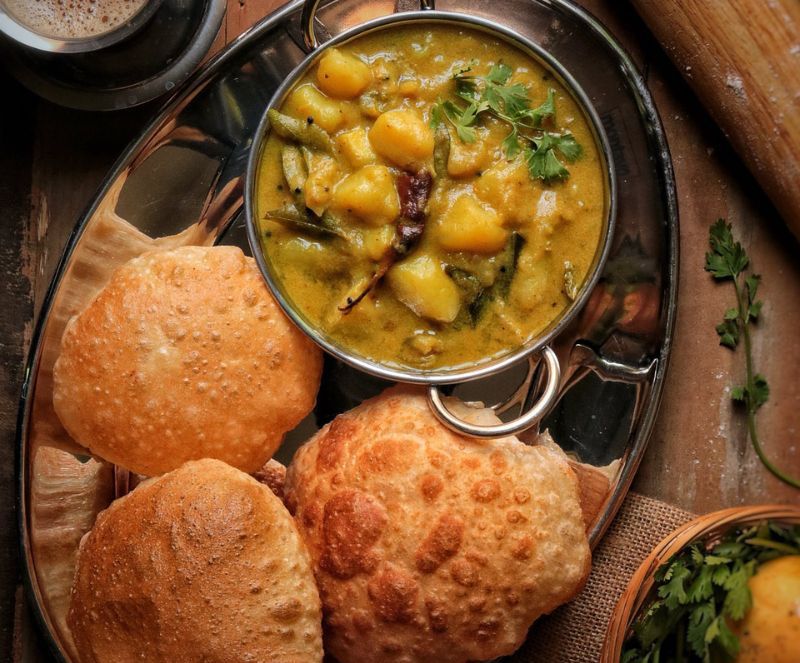
While more than a third of residents don’t eat meat, dairy is quite common in many traditional Indian diets. This abundant use of dairy is a fairly recent phenomenon—for centuries, it was unattainable for most people due to its high cost.
Spices are also an essential part of the culinary culture—they’re essential to the distinctive flavor of Indian food. It’s not uncommon to enjoy a dish crafted with 15 or more spices at a time. While spices like turmeric, cumin, and chilies are used throughout India, the way they are used differ according to the region the dish originates from. Here is your primer broken down by region.
North India
The landscape of North India spans hilly holiday destinations that are part of the Indian Himalayas, the grassy fertile plains of rivers, and the Thar Desert.
The food that comes from this diverse area echoes these various climatic sentiments. North Indian savory food uses more warming spices like cumin and cinnamon and depends on fresh green chilies to add quite a bit of heat.
This kind of food also has a reputation for being very heavy on dairy (especially cottage cheese—called paneer and cream), eggs, and even meat. Despite this dependence on animal-based ingredients, it’s not off the table for vegan eaters—you just have to know what to order.
Staple North Indian vegan dishes include flatbreads or rotis either roasted on the pan or fried into puffy pooris made from wheat flour. These are served with a side of a legume-based gravy made with chickpeas, kidney beans, black gram, or pigeon peas and a dry vegetable dish like pan-fried spiced potatoes (aloo) or okra (bhindi).
Many times, the rotis are turned into parathas which are usually stuffed flatbreads, aloo paratha being the most popular among them. While butter or clarified butter (ghee) is commonly used to cook the parathas, any vegetable oil can be easily substituted in its place.
Among the other grains in use, rice gets a flavorful kick with spices and vegetables in the form of a pulav.
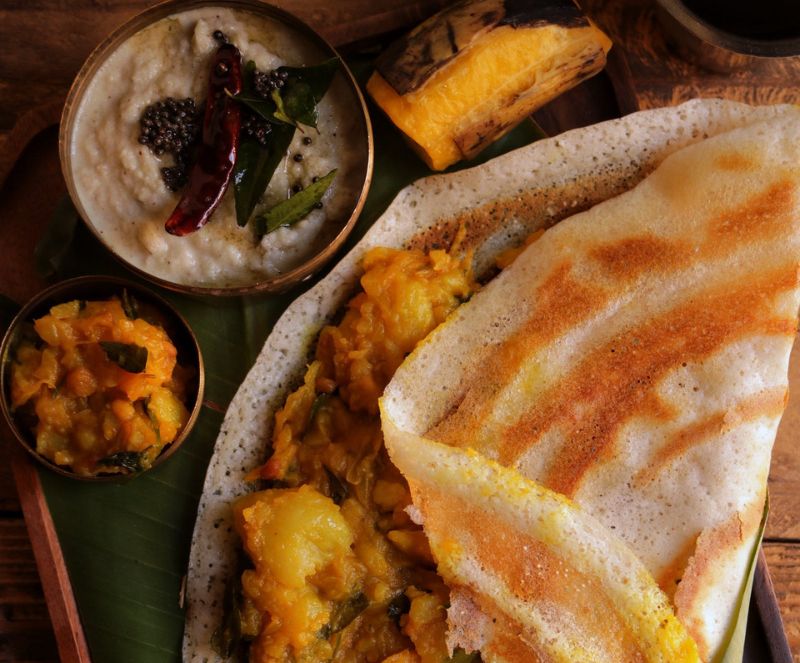
BECOME A VEGNEWS VIP: Get exclusive product deals, freebies, and perks galore!
Chickpeas are used in chole and kidney beans make up rajma—both staple dishes every North Indian home cook makes at least once a week. Simmered with a base of tomatoes and onions with loads of spices, both are usually prepared vegan, even in restaurants. Dal is a popular side that is eaten with rotis as well as rice almost all over India in various forms. Made from split legumes, dals from North India are usually yellow-colored and mildly spiced gravies that are used as dips for rotis and parathas.
The dry vegetable-based sides are where anyone who wants to eat vegan can easily find something to pick from. Popular sides include one made with potato and peas (aloo matar) which is sometimes made dry or sometimes with a tomato-based gravy, spiced okra (bhindi masala), and roasted vegetables in pickling spices (achari sabzi). Any one of these flavorful dishes served with rice or roti is more than enough for a satisfying plant-based meal.
These are just a few of the many vegan dishes one can find in North Indian cuisine. Note: within the scope of North Indian cuisine, many sub-cuisines like Kashmiri, Sindhi, Himachali, and Rajasthani also feature traditional vegetable-based dishes that are easy to veganize if not already vegan.
South India
The south of India consists of mainly flat land with a few hilly ranges but has an abundant tropical coastline. This means that coconuts feature quite heavily in many of its cuisines since they are grown there. These tropical fruits are most often used to give vegetable-based dishes their distinctive and craveable creaminess. To contrast this creamy texture, pepper and red chilies are the most commonly used spices in South India.
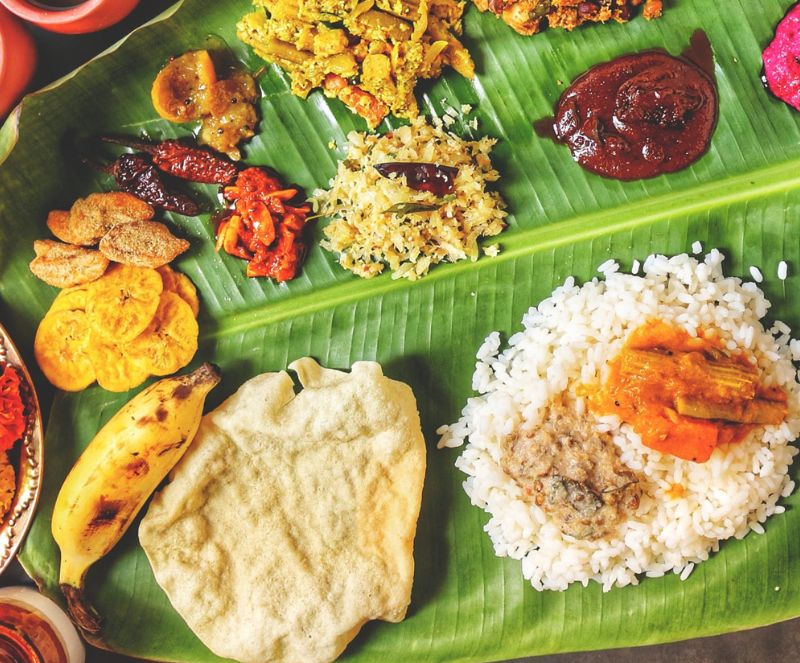
Rice dominates in this region, making its way into fermented batters and even noodles (sevai/idiyappam). Pillowy soft rice cakes (idlis) stuffed with lentils and savory breakfast crêpes (dosas) are two popular morning meals, both typically served with a slightly spicy coconut chutney.
Craving more? Crispy deep-fried savory lentil donuts (vadas); a soft porridge made from broken wheat and vegetables (upma); and a flavored rice of tamarind, spices, vegetables, and lentils (sambar) are among the other vegan-friendly dishes. Dairy in the form of yogurt abounds in the cuisine here, but generally speaking, South Indian cuisine is generally the most vegan-friendly of the regions.
West India
The cuisine from this part of India has been influenced equally by the North and South but brings its own depth of flavors. Much like the South, the West of India finds itself influenced by its ample coastline. While fresh coconuts are commonly used in many vegetable dishes that originated closer to the coast, the mainland prefers to use peanuts instead. Also pulling from the South, rice is extremely prevalent in the cuisine of the West, but wheat has made its inroads here as well.
An everyday meal in West India will consist of dry vegetable dishes known as sabzi or shaak, plain or flavored rice, thin flatbreads made with different grains called roti, phulka, or bhakri; and dal made from different lentils. All of these are generally vegan.
Sprouts are also a common feature and are served as delicious gravies (missal, usal) with a side of local Indian bread (pav).
East India
Cuisine from the East is a mixed bag of sorts with Indian flavors but also some influences from neighboring countries.
Mustard oil is the primary oil used here and provides a pungent flavor to everything it touches.
While this cuisine is not as vegan-friendly as the rest of the country, there are still many traditionally made vegetable dishes that are naturally vegan.
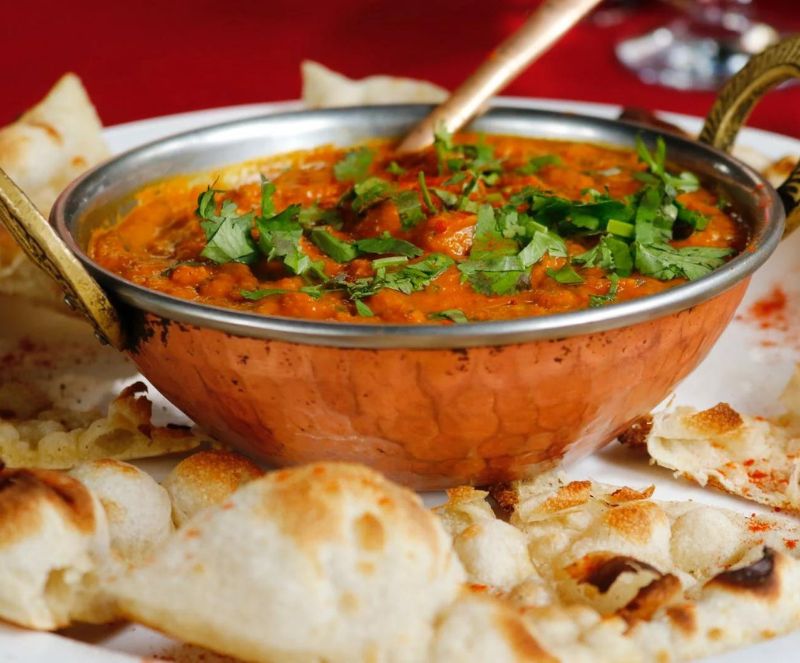
In Bengali cuisine, dry sabzis are roasted in mustard oil with a special five-spice mix. Rice and wheat-based rotis are also staples here as well as vegan-friendly dals.
As you venture further east, Southeast Asian influences start to pop up with dishes like steamed dumplings called momos and even pickles made with bamboo shoots and an Indian version of tempeh or natto called axone.
Indian desserts and snacks
Perhaps the hardest thing to find vegan in Indian cuisine is dessert. Desserts are usually seen as an indulgence and, as a result, dairy finds itself creeping into almost every dessert in India. There may be some traditional desserts that have escaped the intrusion, but those are generally a rare find.
Snacks, however, are plentiful when it comes to vegan options, and Indians love their snacks. These savory treats are often deep-fried to produce that craveable crunch factor. From samosas and chalkis to banana chips and stuffed balls of wheat flour (kachori), you can find vegan-friendly snacks across the country.
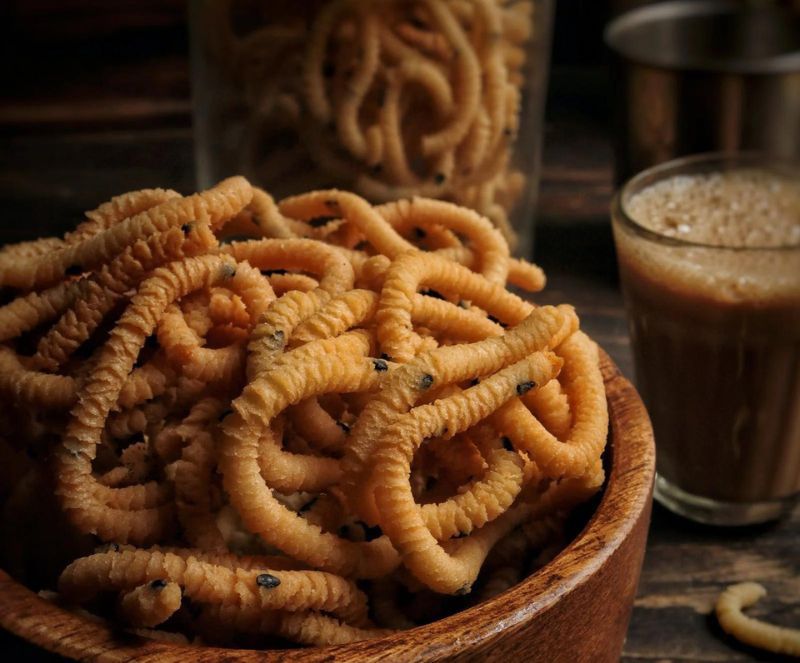
Popular vegan street foods like pani puri, bhel puri, sev puri, vada pav, samosa pav, dhokla, and patra can also be found on snack menus.
Pro tip when eating out: while these foods are naturally vegan, it’s better to confirm and state that you don’t eat dairy. Say you’re allergic—it’s the most straightforward way to ensure the kitchen doesn’t use dairy when preparing your food.
If you’ve read this and wondered “What about curry?” … here’s a fun fact: the word “curry” is a misnomer used to describe all Indian gravies; it is not used as generically in India at all.
Vegan Indian recipes
For a taste of India right at home, try your hand at the following recipes. For even more Indian and Indian-inspired recipes, check out our recipe library here.
1Surti Sev Khamani (Crushed Chana Dal) With Green Garlic Chutney
A popular street food, Surti Sev Khamani originates from the state of Gujarat on the Western coast of India. This version—from the 2021 cookbook From Gujarat With Love: 100 Authentic Indian Vegetarian Recipes—recreates the vibrant textures and flavors with crushed chana dal, loads of ginger and garlic, green chilies, juicy pops of pomegranate, and bright cilantro.
2 Spicy Pea Croquettes Kachori
As mentioned above, kachori—deep-fried, stuffed dough bites—are a common snack across the country. This recipe sees them stuffed with buttery coconut, fiery chilies, zesty lime, herby cilantro, creamy peas, nutty cashews, and sweet raisins.
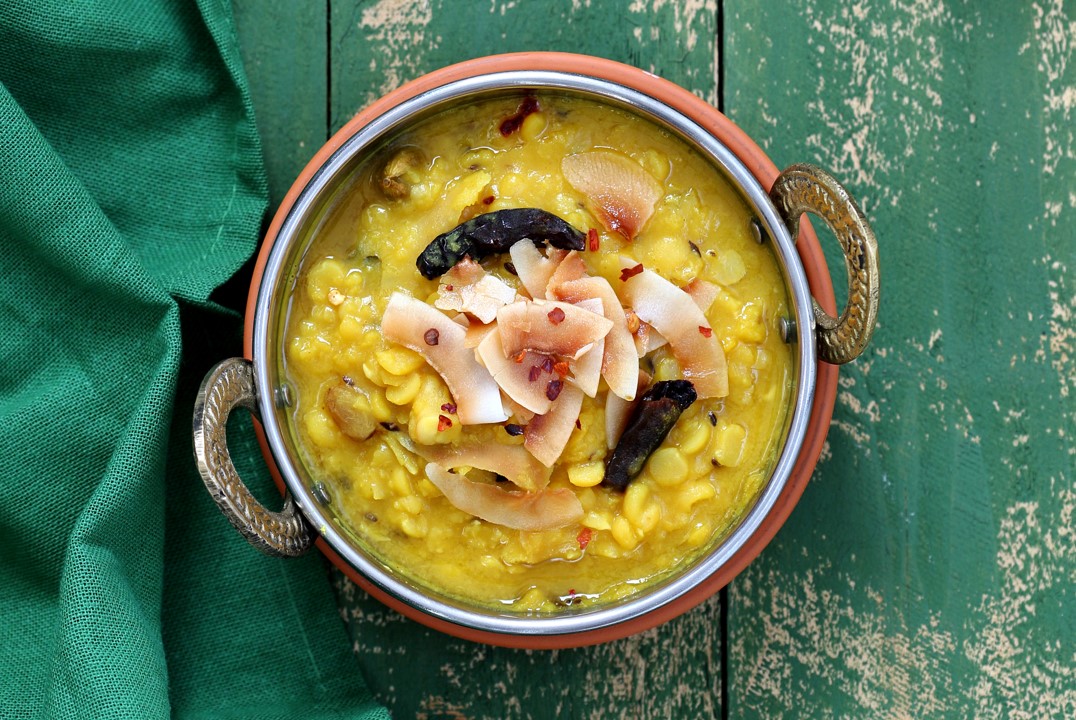
3Split Pea Dal With Ginger and Coconut
Cinnamon sticks, cumin seeds, coconut, chilies, and ginger impart a depth of flavor in this traditional Indian dal from the Vegan Richa’s Indian Kitchen cookbook. Serve over rice or with flatbread for a satiating, flavorful meal.
4Instant Pot Potato Sabzi (Spiced Potatoes)
The secret ingredient in this spiced potato dish is mango powder, best known as amchoor or amchur. It imparts a sweet tartness and balances out the fresh herbs, spices, and fiery ginger in this Instant Pot recipe.
 Shivangi Rao
Shivangi Rao
5Vegan Kaju Katli Kulfi (Indian Cashew Fudge) Ice Cream Bars
Finding a dairy-free dessert in India can prove difficult, as most contain dairy. But, if you have time, whipping up this fusion dessert right at home is definitely worth the effort. This recipe from the Mindful Indian Meals cookbook combines two classic Indian desserts: kulfi, a dense ice cream, and kaju katli, a type of cashew fudge. The result? Cool, creamy, and slightly nutty ice cream bars perfect for hot days.
For more on vegan Indian cuisine, read
JUMP TO ... Latest News | Recipes | Guides | Health | Subscribe

